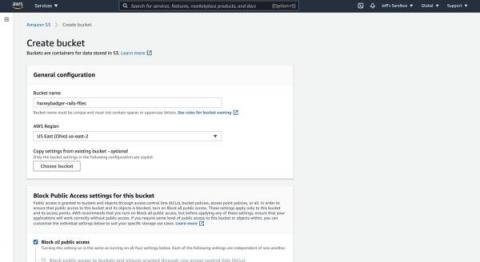Systems | Development | Analytics | API | Testing
February 2022
What Is the Difference Between AWS Redshift and RDS?
Cloud Management for the Modern Workload
The road to the data-driven enterprise is not for the faint of heart. The continuous waves of data pounding into ever-complex hybrid multicloud environments only compound the ongoing challenges of management, governance, security, skills, and rising costs, to name a few. But Hitachi Vantara has developed a path forward that combines cloud-ready infrastructure, cloud consulting and managed services to optimize applications for resiliency and performance, and automated dataops innovations.
Building a Flexible Hybrid Cloud for Today and Tomorrow
Although many enterprises are at varying stages in their cloud journeys, most are adopting distributed mixes of on-premises and public cloud environments in order to maintain certain data and applications close by, while making others more accessible and available online. With such distributed cloud networks, core tenants of the enterprise, such as management, scalability and security, become increasingly challenging. There is a path forward, however.
Unlocking New Revenue Models in the Data Cloud
Today’s applications run on data. Customers value applications not only for the functionality they provide, but also for the data itself. It may sound obvious, but without data, apps would provide little to no value for customers. And the data contained in these applications can often provide value beyond what the app itself delivers. This begs the question: Could your customers be getting more value out of your application data?
Rebranding DevOps as Cloud Engineering
In this episode of Kongcast, Matt Stratton, a staff developer advocate at Pulumi, explains the history of configuration automation, the world of cloud engineering and how it compares to DevOps. Check out the transcript and video from our conversation below, and be sure to subscribe to get email alerts for the latest new episodes. Viktor: So before we jump to this one, tell us a bit about yourself. Matt: I spent about two decades working in traditional technology operations. I was a sysadmin.
Why is AWS Redshift Used? Integrate.io Has the Answer
Make Your AWS Data Lake Deliver with ChaosSearch (Webinar Highlights)
Executing Data Integration on Amazon Redshift
8 Benefits of Setting Up a Data Warehouse in AWS Redshift
A Beginner's Guide to Amazon Redshift
Make the leap to Hybrid with Cloudera Data Engineering
Note: This is part 2 of the Make the Leap New Year’s Resolution series. For part 1 please go here. When we introduced Cloudera Data Engineering (CDE) in the Public Cloud in 2020 it was a culmination of many years of working alongside companies as they deployed Apache Spark based ETL workloads at scale.
10 Ways to Maximize Your Amazon Redshift Experience
Top 7 AWS Redshift ETL Tools
Amazon Redshift to Snowflake Data Integration
Fivetran now available in Microsoft Azure Marketplace
Microsoft customers can discover, transact and deploy Fivetran’s fully managed and automated data pipelines in Azure and more.
How to Set Up Amazon Redshift on AWS
Using AWS S3 For File Storage in Rails Apps
S3 is an excellent way to store files scalably and reliably. This article by Jeff Morhous will show you how to use S3 to store files uploaded to a Rails app.
11 Redshift Tips for Startups
What Is DigitalOcean? Try DigitalOcean Free
Failover Across Clouds
AWS' Newest Official Partner: Speedscale
Speedscale is excited to join the AWS Partner Network (APN), the global community of partners who leverage Amazon Web Services (AWS) to build solutions and services for customers. AWS Partners are uniquely positioned to help businesses take full advantage of all that AWS has to offer and accelerate the journey to the cloud. As part of this achievement, Speedscale has completed the AWS Foundational Technical Review (FTR).
Rebranding DevOps as Cloud Engineering | Matt Stratton | Pulumi | Kongcast Episode 11
Top Cloud Data Migration Challenges in 2022 and How to Fix Them
We recently sat down with Sandeep Uttamchandani, Chief Product Officer at Unravel, to discuss the top cloud data migration challenges in 2022. No question, the pace of data pipelines moving to the cloud is accelerating. But as we see more enterprises moving to the cloud, we also hear more stories about how migrations went off the rails. One report says that 90% of CIOs experience failure or disruption of data migration projects due to the complexity of moving from on-prem to the cloud. Here are Dr.














